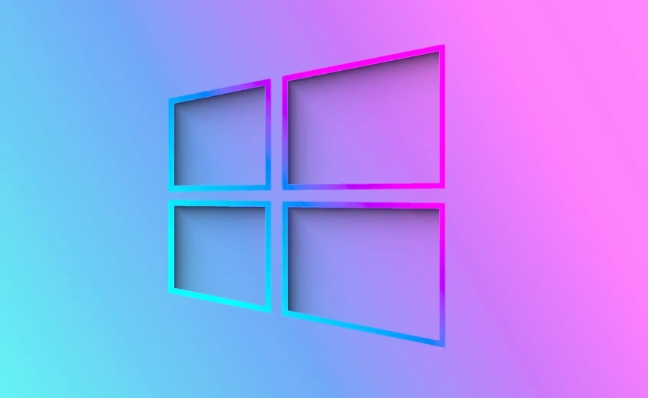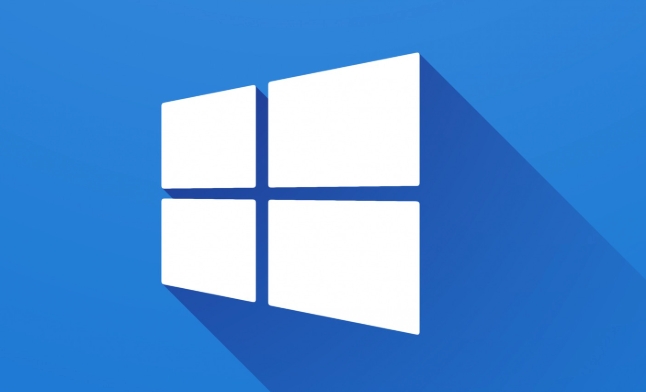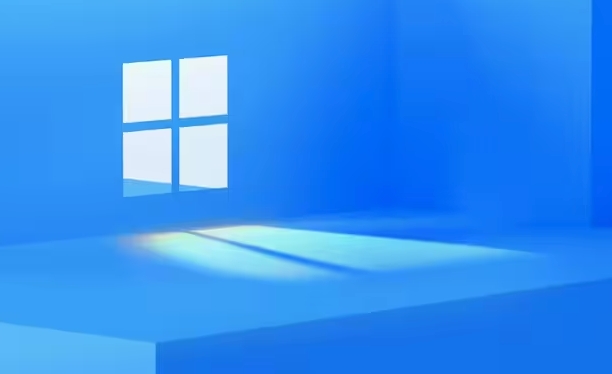 System Tutorial
System Tutorial
 Windows Series
Windows Series
 What is the difference between upgrading and clean installing Windows
What is the difference between upgrading and clean installing Windows
What is the difference between upgrading and clean installing Windows
Jul 14, 2025 am 02:05 AMUpgrade to keep files and settings, clean the installation and completely clear it. When upgrading Windows, the system files are replaced, but personal data and programs are usually retained, suitable for users who pursue convenience; Clean installation will delete all content and start over, suitable for solving performance problems or want the system to be refreshed; Choose Upgrade If the system is stable and you want to retain data, choose Clean installation if the system is unstable or you are willing to back up and restore files. The two methods have their own advantages and disadvantages, depending on actual needs.

Upgrading and clean installing Windows might seem similar because both end up with a working Windows system, but they're very different in process and impact.

When you upgrade Windows, it keeps your files, apps, and settings intact while updating the system files. A clean install wipes everything and starts fresh, meaning you have to reinstall apps and reconfigure settings afterward.

What Happens During an Upgrade?
An upgrade is like renovating a house without moving out — you keep your furniture (files), decorations (settings), and maybe even some appliances (apps), but the structure (Windows) gets updated.
- The installer replaces old system files with new ones
- Most personal data and installed programs are preserved
- You may see some app compatibility issues if software isn't ready for the new version
This method is usually faster and more convenient if your system is running smoothly and you just want the latest features.

What Actually Happens in a Clean Install?
A clean install is like tearing down the house and building a new one from scratch. It wipes the drive completely before installing Windows.
- All files, apps, and settings are removed unless backed up
- The system runs "factory fresh" with no legacy conflicts
- Requires reinstalling drivers and applications afterward
It's the best way to get rid of clutter, fix performance issues, or start over with a clean slate. Many people choose this route when things have gotten sluggish or unstable over time.
When Should You Choose One Over the Other?
Here's how to decide:
-
? Go for an upgrade if:
- Your system is stable and working well
- You don't want to reinstall apps or restore data
- You just want the latest features with minimal downtime
-
? Opt for a clean install if:
- Your system has been acting up lately
- You're OK backing up and restoring files
- You want a fresh, optimized system without old baggage
You can technically upgrade first and then clean install later if needed — sometimes upgrading and seeing how things run helps determine whether a full reset is necessary.
So yeah, upgrading keeps your stuff, clean installing wipes the slate. Neither is inherently better — it all depends on what you need at the moment.
The above is the detailed content of What is the difference between upgrading and clean installing Windows. For more information, please follow other related articles on the PHP Chinese website!

Hot AI Tools

Undress AI Tool
Undress images for free

Undresser.AI Undress
AI-powered app for creating realistic nude photos

AI Clothes Remover
Online AI tool for removing clothes from photos.

Clothoff.io
AI clothes remover

Video Face Swap
Swap faces in any video effortlessly with our completely free AI face swap tool!

Hot Article

Hot Tools

Notepad++7.3.1
Easy-to-use and free code editor

SublimeText3 Chinese version
Chinese version, very easy to use

Zend Studio 13.0.1
Powerful PHP integrated development environment

Dreamweaver CS6
Visual web development tools

SublimeText3 Mac version
God-level code editing software (SublimeText3)
 How to Change Font Color on Desktop Icons (Windows 11)
Jul 07, 2025 pm 12:07 PM
How to Change Font Color on Desktop Icons (Windows 11)
Jul 07, 2025 pm 12:07 PM
If you're having trouble reading your desktop icons' text or simply want to personalize your desktop look, you may be looking for a way to change the font color on desktop icons in Windows 11. Unfortunately, Windows 11 doesn't offer an easy built-in
 Fixed Windows 11 Google Chrome not opening
Jul 08, 2025 pm 02:36 PM
Fixed Windows 11 Google Chrome not opening
Jul 08, 2025 pm 02:36 PM
Fixed Windows 11 Google Chrome not opening Google Chrome is the most popular browser right now, but even it sometimes requires help to open on Windows. Then follow the on-screen instructions to complete the process. After completing the above steps, launch Google Chrome again to see if it works properly now. 5. Delete Chrome User Profile If you are still having problems, it may be time to delete Chrome User Profile. This will delete all your personal information, so be sure to back up all relevant data. Typically, you delete the Chrome user profile through the browser itself. But given that you can't open it, here's another way: Turn on Windo
 How to fix second monitor not detected in Windows?
Jul 12, 2025 am 02:27 AM
How to fix second monitor not detected in Windows?
Jul 12, 2025 am 02:27 AM
When Windows cannot detect a second monitor, first check whether the physical connection is normal, including power supply, cable plug-in and interface compatibility, and try to replace the cable or adapter; secondly, update or reinstall the graphics card driver through the Device Manager, and roll back the driver version if necessary; then manually click "Detection" in the display settings to identify the monitor to confirm whether it is correctly identified by the system; finally check whether the monitor input source is switched to the corresponding interface, and confirm whether the graphics card output port connected to the cable is correct. Following the above steps to check in turn, most dual-screen recognition problems can usually be solved.
 Want to Build an Everyday Work Desktop? Get a Mini PC Instead
Jul 08, 2025 am 06:03 AM
Want to Build an Everyday Work Desktop? Get a Mini PC Instead
Jul 08, 2025 am 06:03 AM
Mini PCs have undergone
 Fixed the failure to upload files in Windows Google Chrome
Jul 08, 2025 pm 02:33 PM
Fixed the failure to upload files in Windows Google Chrome
Jul 08, 2025 pm 02:33 PM
Have problems uploading files in Google Chrome? This may be annoying, right? Whether you are attaching documents to emails, sharing images on social media, or submitting important files for work or school, a smooth file upload process is crucial. So, it can be frustrating if your file uploads continue to fail in Chrome on Windows PC. If you're not ready to give up your favorite browser, here are some tips for fixes that can't upload files on Windows Google Chrome 1. Start with Universal Repair Before we learn about any advanced troubleshooting tips, it's best to try some of the basic solutions mentioned below. Troubleshooting Internet connection issues: Internet connection
 How to clear the print queue in Windows?
Jul 11, 2025 am 02:19 AM
How to clear the print queue in Windows?
Jul 11, 2025 am 02:19 AM
When encountering the problem of printing task stuck, clearing the print queue and restarting the PrintSpooler service is an effective solution. First, open the "Device and Printer" interface to find the corresponding printer, right-click the task and select "Cancel" to clear a single task, or click "Cancel all documents" to clear the queue at one time; if the queue is inaccessible, press Win R to enter services.msc to open the service list, find "PrintSpooler" and stop it before starting the service. If necessary, you can manually delete the residual files under the C:\Windows\System32\spool\PRINTERS path to completely solve the problem.
 How to show file extensions in Windows 11 File Explorer?
Jul 08, 2025 am 02:40 AM
How to show file extensions in Windows 11 File Explorer?
Jul 08, 2025 am 02:40 AM
To display file extensions in Windows 11 File Explorer, you can follow the following steps: 1. Open any folder; 2. Click the "View" tab in the top menu bar; 3. Click the "Options" button in the upper right corner; 4. Switch to the "View" tab; 5. Uncheck "Hide extensions for known file types"; 6. Click "OK" to save settings. This setting helps identify file types, improve development efficiency, and troubleshoot problems. If you just want to view the extension temporarily, you can right-click the file and select "Rename" and press the Esc key to exit, and the system settings will not be changed.






